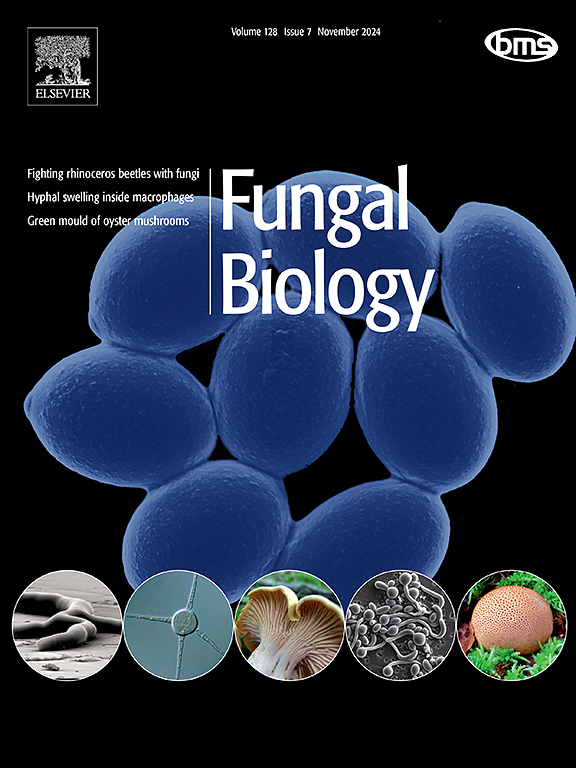Exploring the tritrophic interactions between Araujia hortorum, Puccinia araujiae, and a mycoparasitic Cladosporium: implications for the biological control of moth plant
IF 3
3区 生物学
Q2 MYCOLOGY
引用次数: 0
Abstract
Tritrophic interactions involving host plants, fungal pathogens and mycoparasites play an important role in the dynamics of natural ecosystems. In this work, we investigate the impact of the rust fungus Puccinia araujiae on the growth of Araujia hortorum plants in the presence/absence of a mycoparasitic Cladosporium species identified here as Cladosporium sphaerospermum, supported by both morphological and molecular studies. The capacity of the latter to grow and reproduce at the expense of teliospores of the rust was confirmed through microscopic observations. P. araujiae is added to the list of hosts of C. sphaerospermum. An experiment was carried out to assess the impact of rust infection on host plant biomass and whether C. sphaerospermum affected the outcome of the interaction. Plants were subjected to three treatments: inoculation with the rust alone, inoculation with both the rust and the mycoparasite, and uninoculated controls. Rust-infected plants (both with and without the mycoparasite) exhibited 50–60 % reductions in biomass, primarily in root tissues, with premature senescence and leaf abscission contributing to overall decline. However, rust-infected plants in the absence of the mycoparasite produced 10 % less biomass than those in the treatment where it was present, showing that C. sphaerospermum is capable of exerting a detrimental effect on the rust which in turn reflects on a better performance of the plant host. It is argued that this fact does not preclude the potential of P. araujiae as a biological control agent.
探讨花蛾、花蛾和分枝真菌枝孢菌间的营养相互作用及其对蛾类植物生物防治的意义
寄主植物、真菌病原体和真菌寄生虫之间的三营养相互作用在自然生态系统动力学中起着重要作用。在这项工作中,我们通过形态学和分子生物学的研究,研究了在存在或不存在一种分枝真菌Cladosporium sphaerspermum的情况下,araujiae锈菌对Araujia hortorum植物生长的影响。后者的生长和繁殖能力,以牺牲远孢子的锈病是通过显微镜观察证实的。在球孢草的寄主列表中增加了黄姜。通过试验研究了锈病侵染对寄主植物生物量的影响,以及球芽孢霉对互作结果的影响。分别接种锈病菌、同时接种锈病菌和未接种锈病菌的对照。被锈病感染的植物(无论是否感染了支寄生虫)的生物量减少了50 - 60%,主要是在根组织中,过早衰老和叶片脱落导致了总体下降。然而,在没有霉菌的情况下,被锈病感染的植物产生的生物量比有霉菌的处理少10%,这表明球孢霉能够对锈病产生不利影响,这反过来反映了植物寄主的更好表现。有人认为,这一事实并不排除araujiae作为生物防治剂的潜力。
本文章由计算机程序翻译,如有差异,请以英文原文为准。
求助全文
约1分钟内获得全文
求助全文
来源期刊

Fungal biology
MYCOLOGY-
CiteScore
5.80
自引率
4.00%
发文量
80
审稿时长
49 days
期刊介绍:
Fungal Biology publishes original contributions in all fields of basic and applied research involving fungi and fungus-like organisms (including oomycetes and slime moulds). Areas of investigation include biodeterioration, biotechnology, cell and developmental biology, ecology, evolution, genetics, geomycology, medical mycology, mutualistic interactions (including lichens and mycorrhizas), physiology, plant pathology, secondary metabolites, and taxonomy and systematics. Submissions on experimental methods are also welcomed. Priority is given to contributions likely to be of interest to a wide international audience.
 求助内容:
求助内容: 应助结果提醒方式:
应助结果提醒方式:


